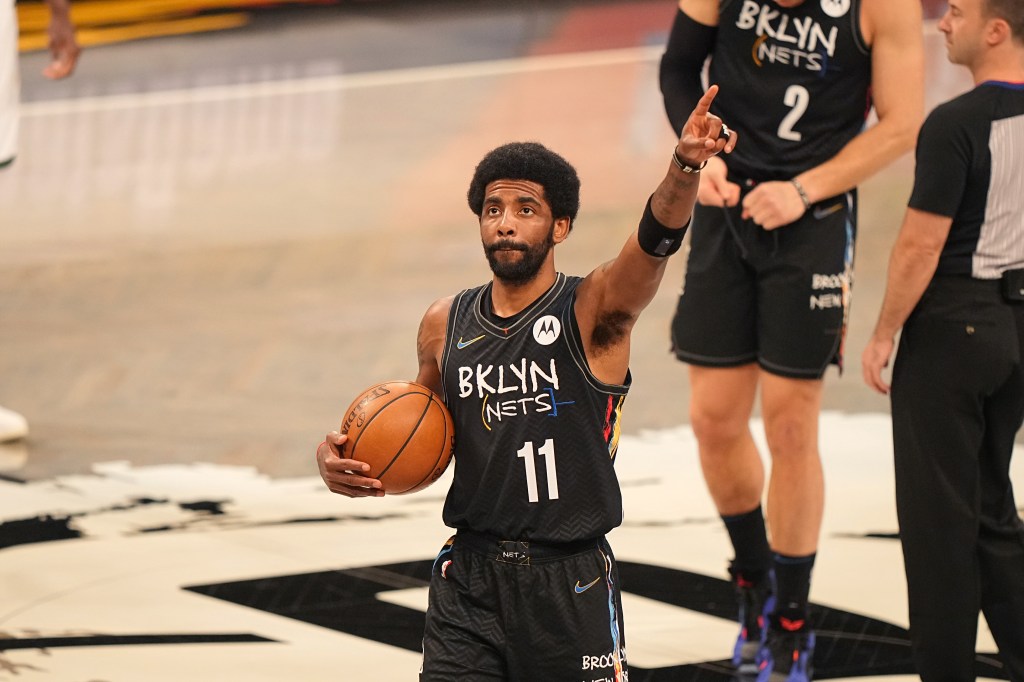These days, the NBA and its faithful fans are searching for unicorns. I’m talking about a virtually mythical combination of physical attributes in one person for the purpose of pure full-court magic.
Once upon a time, players were assigned roles and positions based on their heights. Shorter people were supposed to shoot, pass, and dribble while those more vertically gifted were expected to lumber around the basket. This was all basketball 101.
Videos by VICE
Somewhere in recent years though, unicorns emerged and the dogma was upended. Since the advent of the NBA, the average height of players has increased from 6’3” to what it is today: 6’7”. As height as increased, the league’s skill and athleticism has also ballooned. And so, tall players (power forwards and centers) are no longer gangly giants dependent entirely on their inches to make an impact. Now, they’re expected to be sublime and omnipotent too. But while they’re tasked to bring their A-game to the court for every game, the anatomical confines of their knees may really not be about that life.
For a piece in the New Yorker, Vinson Cunningham described the preternatural brilliance of the Milwaukee Bucks’ Giannis Antetokounmpo, who’s the archetype of the NBA’s unicorn. “All game, he did things that—given his almost seven-foot frame and long, stretchy limbs—he shouldn’t, by rights, be able to do, but which have become staples of the diet he offers to fans: deceptive hesitations before journeys into the paint; flicked fifteen-foot turn-around jumpers; easy sprints to regain a position on defense that seemed hopelessly lost.”
Here’s where it gets dangerous: when coaches realize these men aren’t mythical beings but instead real people with real body limitations. This season, DeMarcus Cousins of the Pelicans ruptured his left Achilles tendon and Kristaps Porzingis of the Knicks tore his left ACL. Both injuries ended their seasons.
Injuries and injury scares have also punctuated the careers of other uncanny talents: Joel Embiid, Ben Simmons, Kevin Durant, and Anthony Davis. A 2014 tally by FiveThirtyEight found that taller players have missed a larger percentage of games than their shorter counterparts, with those 7’0” or taller being absent for 24 percent of their games. Cousins’ and Porzingis’ injuries have occurred in a season already teeming with hurt players. A recent count found that 3,798 games had been missed due injuries, up 42 percent from the same point last season.
There are theories about this year’s injury epidemic, which is perplexing at a time of unprecedented advances in medicine and science. Some have noted that the rise is merely part of a random year-to-year fluctuation, devoid of any meaningful explanation. Others are suspicious of the NBA’s adoption of a more frenetic style of play, which increases the probability for injury because of all the additional movement up and down the court. There have also been rumblings from executives and coaches about this year’s shortened preseason and the suboptimal conditioning and regular season preparation that resulted.
In recent seasons, coaches have not been passive about their lengthened injured lists and have implemented their own remedy to prevent injury: the Did Not Play-rest (DNP-rest). Though a study has discerned no effect of this on playoff injury risk or performance, players are simply held out of entire regular season games and instructed to sit on the sidelines and rest. While new league rules have caused a dip in the practice, it still persists.
Any temptation to blame the schedule is unfounded. Playing back-to-back games or playing four games in five days alone has not been associated with a heightened injury risk. Game injuries do occur more often in away games, which may be attributed to NBA travel schedules that affect sleep patterns and thus reaction times.
More from Tonic:
According to Brian Cole, an orthopedic surgeon at Rush University and team physician for the Chicago Bulls, this season is no different from others. “Game schedule density, back-to-backs, things of that nature have not really been shown to make a difference,” he says. “Other than a statistical anomaly, we have no data that it is otherwise. This population of players is likely no different than the year before.”
Cole notes that the NBA is still not good at injury prediction models and assimilating all the independent variables that go in it. Assessing the risk for any player, let alone these unprecedented unicorns, thus remains an unknown. He adds, “I have this intuitive feeling that as they get bigger, stronger, faster, and taller, I think the body can only do so much and that may be a factor.”
In the end, the principles of human anatomy, physics, and physiology may prove to be nonnegotiable. In his forthcoming book Human Errors, scientist Nathan Lents writes about our imperfect evolution to bipedalism and the anatomy that was left most vulnerable. “The anatomical adaptation to upright walking never quite finished in humans. We have several defects that are the result of this failure to complete the process.”
Lents comments specifically on two overburdened parts: the anterior cruciate ligament (ACL), which connects the femur (thighbone) to the tibia (shinbone) and resides in the middle of the knee, and the Achilles tendon, which attaches the calf muscle to the heel of the foot. Because of our evolutionary straight-leg arrangement, “the Achilles tendon has become the Achilles’ heel” of the entire ankle joint and the ACL endures “much more strain than it is designed to.”
Stressed to their unnatural max by the sudden changes in speed, momentum, and direction of today’s larger players, the ACL and Achilles tendon capitulate—and this is what might have happened when Porzingis and Cousins were felled to the ground earlier this season.
In a running sport that involves acceleration and deceleration and a high degree of unpredictability, the risk is perpetual. One study found that even asymptomatic NBA players carry one or more abnormalities within the knee on MRI. As renowned trainer Tim Grover wrote in Sports Illustrated, “The same muscles, ligaments, tendons, and joints are used over and over again, in the same direction, the same angles, the same motions…At some point the human body just says, ‘Enough.’”
As we wander further into this new frontier on basketball in which players like Antetokounmpo do the outrageous with facility, there will be more work for NBA officials, doctors, trainers, and support staff to do. While injury prediction models still lag behind and bad luck will intermittently reign, league schedulers should redouble their efforts to assess risk and interventions should be deployed to encourage more multi-sport athletes at the high school level. And given the unremitting demands of a 82-game schedule, fatigue management, recovery, and sleep have to be optimized. At this moment of unknowns, this is all we have in order to ensure that we’re not destroying the unicorns for the sake of a little magic.
Sign up for our newsletter to get the best of Tonic delivered to your inbox weekly.




